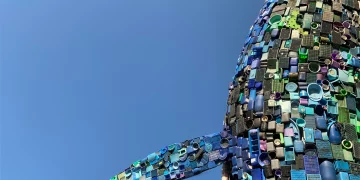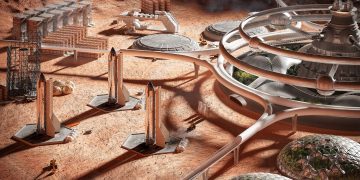Introduction
Creativity is often viewed as the domain of the human mind—an intricate blend of imagination, emotions, and experience. Whether in art, music, literature, or design, creative expression has traditionally been seen as something uniquely human. However, as artificial intelligence (AI) continues to evolve, the boundaries between human ingenuity and machine learning are becoming increasingly blurred.
Today, AI is not just about automating routine tasks or solving complex calculations; it is beginning to play an active role in expanding our creative potential. From generating new musical compositions to assisting with architectural design, AI is not only complementing human creativity but, in many ways, pushing its boundaries further than we ever thought possible.
But can AI truly “broaden our horizons of creativity”? In this article, we will explore how AI can augment and even revolutionize the creative processes across different industries. We will look at the tools that are helping artists, writers, designers, and musicians, and investigate the ethical and philosophical questions that come with using AI in the creative process.
The Role of AI in Art and Design
AI has made remarkable strides in the world of visual arts, producing works that often blur the lines between machine and human-made creations. Machine learning algorithms can now analyze vast datasets of existing art and generate new pieces based on patterns, styles, and techniques learned from those datasets. This opens up exciting possibilities for artists to experiment and collaborate with machines.
AI-Powered Art Generators
Tools like DeepArt, Artbreeder, and RunwayML use neural networks to create stunning works of art. These platforms allow users to input basic parameters, such as style, color palette, or themes, and the AI generates a unique piece based on those instructions. The results are often awe-inspiring, blending traditional art forms with futuristic aesthetics. These AI-generated artworks can serve as inspiration for human artists or even stand as independent pieces of art themselves.
But what does this mean for human creativity? While AI can mimic existing artistic styles, it cannot replicate the nuance and emotional depth of a human artist’s work. However, it can serve as a tool that enhances creativity. For example, an artist might use an AI to generate multiple variations of a concept, helping them visualize their ideas in new ways or break free from creative blocks.

Digital Art and Interactive Design
In digital art and design, AI is enhancing creativity by making tools more intuitive and accessible. Adobe’s Sensei, for example, integrates AI into its Creative Cloud suite, offering features like automatic photo enhancement, intelligent content-aware fill, and advanced filters. These features enable designers to focus more on the conceptual and creative aspects of their work, while the AI handles the more technical details.
Interactive design is another area where AI is pushing boundaries. Generative design tools, such as Autodesk’s Generative Design platform, use algorithms to explore thousands of possible design variations based on specific parameters. This is particularly useful in architecture, product design, and engineering, where traditional methods might be limited by human imagination or time constraints. The AI helps designers and engineers discover innovative forms and solutions they might never have considered on their own.
AI in Music: Composing the Future
The role of AI in music is one of the most fascinating examples of how machine learning can enhance creativity. Composers and musicians are now using AI algorithms to create new sounds, experiment with genres, and even generate entire compositions. These AI systems are capable of learning from vast libraries of music across different genres, and they can synthesize original pieces based on patterns, harmonies, and rhythms.
AI-Powered Music Creation Tools
Platforms like Amper Music, Aiva, and Jukedeck allow users to create royalty-free music by simply selecting a mood, style, and tempo. The AI then composes the music and can even adjust the arrangement based on the user’s preferences. These tools provide an excellent resource for content creators, filmmakers, and advertisers who need music quickly and efficiently.
For professional musicians, AI can be an exciting collaborator. OpenAI’s MuseNet is a deep learning model that can generate music in a variety of styles, from classical to pop to jazz. Musicians can use it as a source of inspiration, building on AI-generated melodies, harmonies, or even lyrics. This opens up new possibilities for composition, where AI acts as a co-creator rather than a mere tool.
Human-Machine Collaboration in Music
The collaboration between human musicians and AI can result in truly groundbreaking music. For example, Taryn Southern, an American musician, used AI-powered tools to produce her album “I AM AI”, which was co-created with an AI algorithm. This hybrid approach allowed her to explore new sounds and techniques that would have been impossible with traditional methods.
While AI is pushing the boundaries of what is musically possible, it also raises the question: Can AI be truly creative? Many argue that while AI can generate music that mimics human creativity, it lacks the emotional depth and personal experience that inform a musician’s work. Nevertheless, AI is still seen as a tool to enhance and extend human creativity, helping musicians break through their own limitations.

AI in Writing and Literature
In the realm of writing, AI has proven to be both a helpful assistant and an inspiring partner. AI algorithms can assist authors in generating ideas, writing drafts, and even overcoming writer’s block. These tools can analyze existing literature and produce text in a variety of styles, from poetry to prose.
AI-Powered Writing Assistants
One of the most notable examples of AI in writing is OpenAI’s GPT-3, a language model capable of generating human-like text. Writers can prompt GPT-3 to produce creative writing, generate dialogue for stories, or even suggest plot twists. It can assist with brainstorming ideas, drafting content, or improving the flow of writing. Some authors use GPT-3 as a creative tool to enhance their storytelling process, while others use it to generate entire sections of their novels or scripts.
Creative Writing and AI-Generated Literature
AI has also been used to generate literature, some of which is published as standalone works. For instance, in 2020, the novel “1 the Road” was co-written by an AI algorithm called “DeepSpeare”. The algorithm, which was trained on works by William Shakespeare, produced a road-trip novel in iambic pentameter. While critics may argue that AI-generated literature lacks the emotional nuance of human-written works, these experiments serve as intriguing experiments in creativity, raising the question: Can AI ever truly “write” in a meaningful way?
AI’s involvement in writing also extends to genres such as poetry. Programs like Poetica use neural networks to write original poems, learning from a database of poetic works. While these poems may not yet evoke the depth of human emotion, they demonstrate how AI can spark new ideas and help poets explore different writing styles.
AI in Film and Animation
The film and animation industries are also seeing the influence of AI on creativity. AI tools are being used to streamline production processes, create realistic CGI effects, and even generate scripts or storylines.
Scriptwriting and Plot Generation
AI-powered tools like Scripbot and Celtx are making their mark in the world of screenwriting. These tools can help screenwriters develop plots, characters, and dialogue by analyzing patterns in successful films. While the AI is not yet at the level where it can write a blockbuster film from start to finish, it can assist screenwriters by generating initial drafts or offering suggestions to improve the narrative.
AI in Animation and CGI
In animation and CGI, AI is enabling studios to create more sophisticated visuals with less effort. For example, AI-driven algorithms are used to generate realistic character movements, simulate natural environments, and enhance special effects. This allows animators to focus on storytelling and creativity, while the AI takes care of the more technical aspects.
Furthermore, AI has been employed to generate realistic deepfakes and synthetic actors. While these technologies raise ethical concerns, they also have the potential to reshape the way films are made. AI-generated characters can be used in place of human actors, opening up new possibilities for storytelling and production.
Ethical Considerations: AI and Human Creativity
As we embrace AI as a tool to enhance creativity, we must also consider its ethical implications. For example, the use of AI in generating artwork, music, or literature raises questions about authorship and ownership. If an AI algorithm creates a piece of music or a painting, who owns the rights to that work? Is it the programmer who designed the algorithm, the machine itself, or the user who prompted the AI?
Furthermore, there is the question of authenticity. Can AI-generated art, music, or writing ever truly be considered “art” in the traditional sense, or is it simply a product of data and algorithms? While AI can mimic human creativity, it cannot experience the world in the same way that humans do. Therefore, the emotional resonance and personal experiences that shape human art are absent from machine-generated works.
Conclusion: A New Horizon for Human Creativity
AI has undoubtedly broadened our creative horizons in ways that were once unimaginable. Whether it’s generating music, art, or writing, AI is enabling us to push the boundaries of what is possible. However, as we integrate these technologies into our creative processes, we must be mindful of the ethical challenges they pose. AI is not a replacement for human creativity—it is a powerful tool that can augment and inspire it.
Ultimately, AI is not about replacing human artists, writers, and musicians; it’s about opening up new possibilities for collaboration and experimentation. By embracing AI as a creative partner, we can explore new ideas, break free from traditional constraints, and create works that were once thought impossible.























